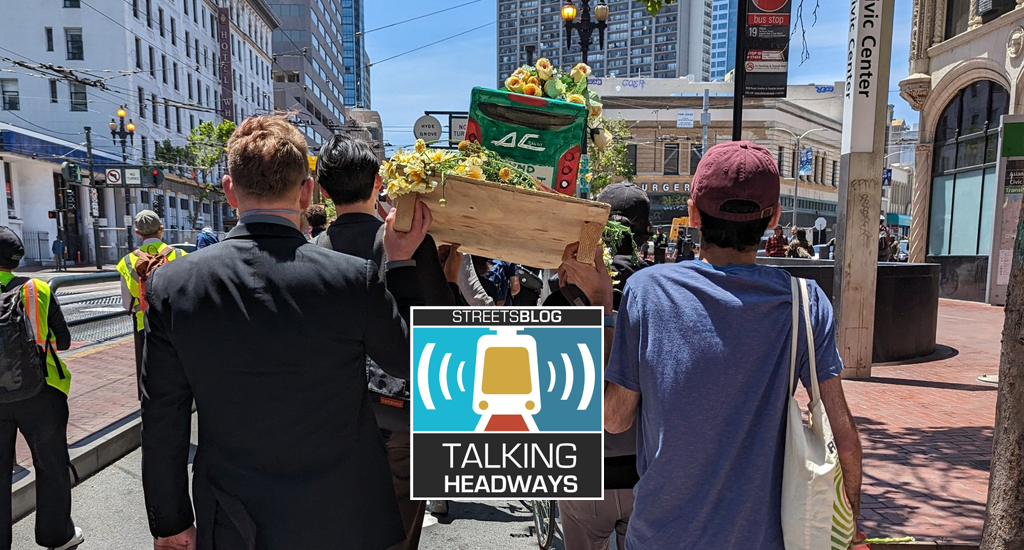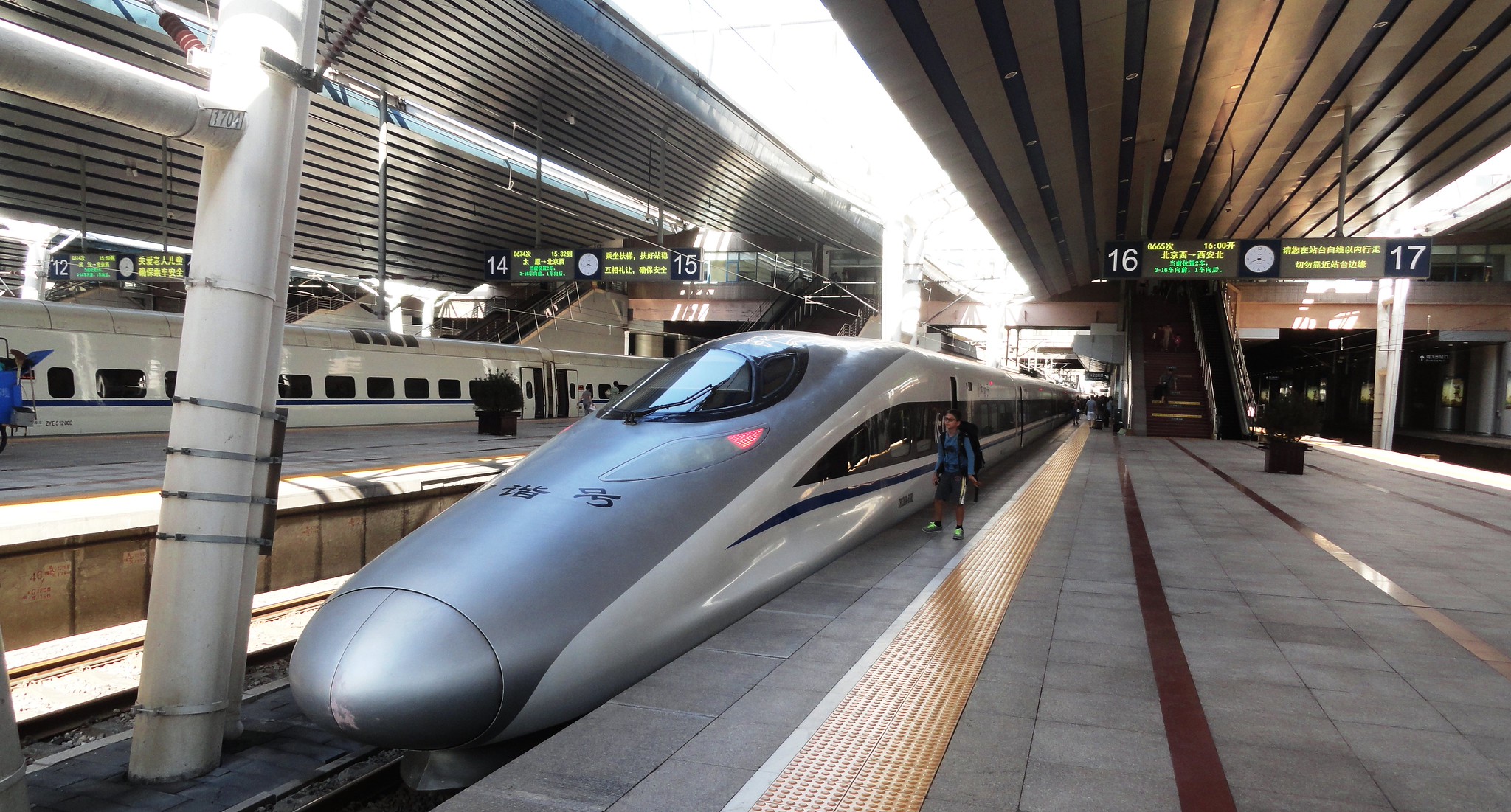This week we’re sharing a San Francisco Planning and Urban Research (SPUR) forum on how a statewide coalition of transit advocates organized funding bridge to avert a fiscal cliff last year for transit operators in the state.
The discussion — led by SPUR’s Laura Tolkoff — delves into how they did it and what’s next. Scroll down for an edited excerpt or click here for an unedited, AI-generated transcript of the entire conversation.
Laura Tolkoff: So now we’re gonna jump ahead to the spring and at this point, just as a reminder, the governor has released his budget message and the legislature has also issued their priorities and we really were not seeing a lot of traction for this cause. And I think to put it mildly, we were starting to get really worried. This is where we really started leaning into direct action and organizing and using the media and public opinion to bring attention to this cause. So I am gonna ask Cyrus and Adina to talk a little bit about some of the work that they did as part of this campaign.
Adina Levin: I think if you were watching the story on the news, it seemed like the grassroots activity really came outta nowhere. But there were actually several months of really methodical preparation for this. As the coalition grew in the Bay area and around the state, we built up a set of tools and we built up a website that had presentations where we would give presentations to groups all around the Bay area and all around the state engaging their membership that this was a critical issue — tools where people could send a timely letter or put in a call to their representatives.
Through grassroots outreach, we were able to turn out dozens of people to speak at the hearings that had happened earlier. So with all of that, we had really built up quite a network that was ready to spring into even more intensive action when we found out that things were not going well and we really needed to amp up the volume.
I’m going to turn that over to Cyrus to talk about the transit funeral, and to talk about what we realized in the Bay area — that key budget chairs were in San Francisco and in Oakland, Phil Ting and Nancy Skinner. So we hadn’t really an opportunity to elevate this issue with the budget chairs, Cyrus.
Cyrus Hall: Yeah, and I would say on the ground the turning point was really a May 12th town hall of Phil Ting here in San Francisco. We had gathered 20 or 30 advocates and activists to go to that town hall to really try to get Assembly Member Ting to answer the question, "As Budget Chair in the Assembly, are you supportive of operational gap funding for transit agencies?" And we just did not get the answer that we wanted out of that discussion. When we followed up after the town hall, directly with staff, we got a very direct answer. And that direct answer at that moment in time was "no." And I think this really signaled that escalation was necessary, that we needed to be doing more to get the word out that the state was not about to step in and provide the funding necessary to make sure that our agencies didn’t collapse.
So after that event, the idea of a "transit funeral" started to percolate quite quickly and I sort of, I took a leap. I decided to pick it up and run with it and it was immediately clear that we needed a tremendous amount of help. The preexisting structure that had been built with the Survive and Thrive Coalition was helpful as we quickly had to bring in 10, 20 groups to put this together, including some that Laura mentioned at the beginning — like Kid Safe SF who were critical in really bringing a lot of political factions to the march and to the rally. And also groups like Safe Street Rebel, who provided bike marshaling and brought in a huge number of people — a huge number of groups in East Bay. Telegraph for People, Bike East Bay all came together in the course of one week to put on this event, to find the music, to find a person to lead us all in mourning as we marched.
The groups also helped us gather supportive politicians like Scott Wiener, like Mayor Breed, also like Supervisor Preston — so all across the Bay Area political spectrum — to speak in support and to speak why it is so important that Sacramento find the operational funding necessary to give our agencies the time to shift their strategies and rebuild ridership and find new funding. So on June 3, we held the funeral and rally starting in Oakland, marching on BART underneath the Bay through the Trans-Bay Tunnel and coming out in Civic Center and then marching down Market to San Francisco City Hall, where we held a rally with speakers including Mayor Breed, Sen. Wiener and a number of other local politicians and agency heads.
At the end of the rally it was really clear that we’d produced a bunch of energy and momentum, and that we needed to quickly figure out what are we going to do with all of this energy and momentum. We had been so in the moment producing this event very rapidly and quickly, some activists associated with Safe Street Rebel followed up about a week later on June 8 and ended up blocking Octavia and Market — an Intersection that also happens to be an off ramp for US 101. And we had some good luck, a happy accident. The media alert went out late, we got incredible media coverage from helicopters, from people on the ground with cell phones.
We were able to take that footage, edit it into very spicy social media that really went viral and helped us spread the word again and get more people activated, more people sending letters, more people phoning into Sacramento. And that pivoted further into flyering on BART. Advocates in the East Bay really found that talking to people directly on the train was generating a lot of letters and phone calls. So it was just one thing leading to another and building on energy every step of the way and always being ready to escalate just a little bit more in order to make sure that the media was covering the issue, that people were learning about it and that people were reaching out.
Went to the Bay Area transit funeral, it was sad, fun, infuriating, and inspiring
— Teg (@FloofyBlueThing) June 4, 2023
I really hope that the state government gives transit agencies the bridge they need to survive pic.twitter.com/PgJW0McRLc
Adina Levin: And that lightning activism really highlighted the diversity of the coalition. When we were going out and doing the flyering, we wanted to use multiple languages. I believe the Tenderloin Neighborhood Development Corporation generated Tagalog. We had someone from the Bay Area Council, a business group, generate the Chinese language. We had people across the political spectrum working at lightning speed to get the word out on the flyers. And as we started to hear that there was negotiation happening, there were cracks in the “no” position. We encouraged the thousands of people that we had built up in a list to call the governor, call the budget chairs, call the leadership that were negotiating.
In those last couple of weeks we generated over 10,000 calls and letters — really amping up that volume as they were making those final decisions.






